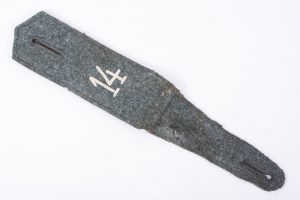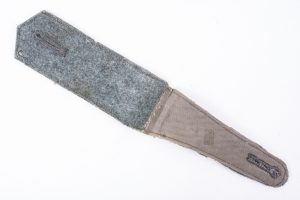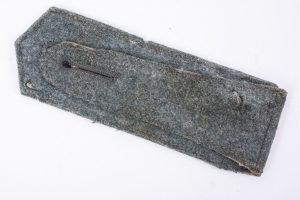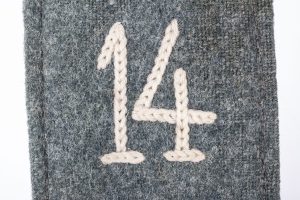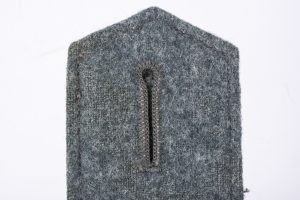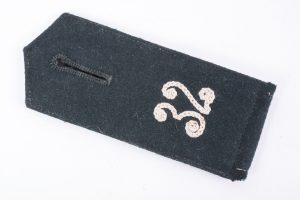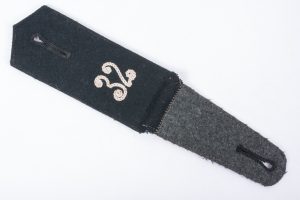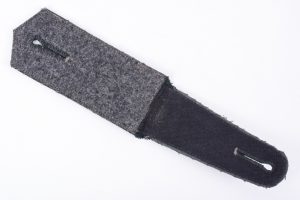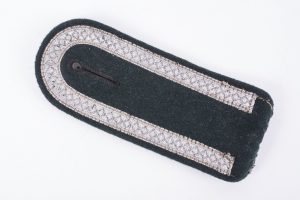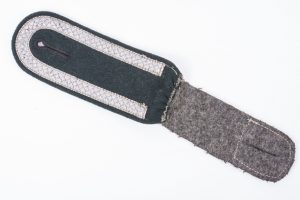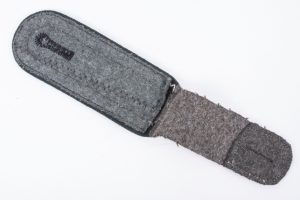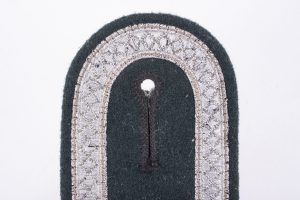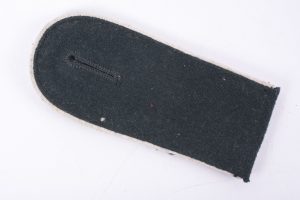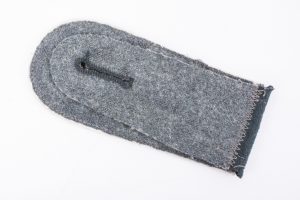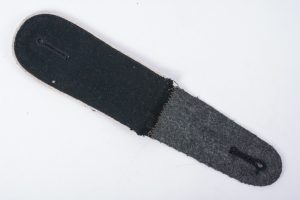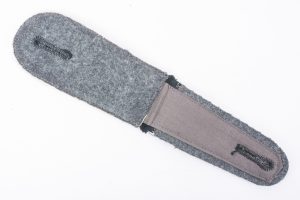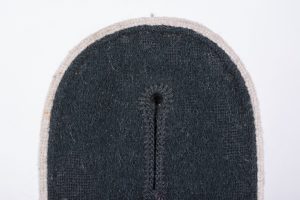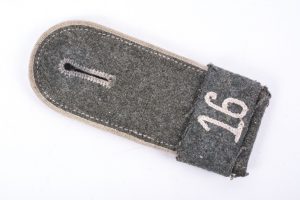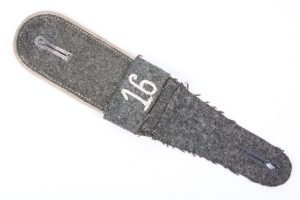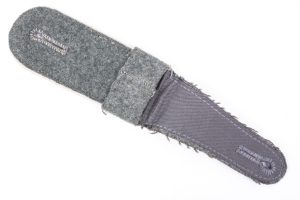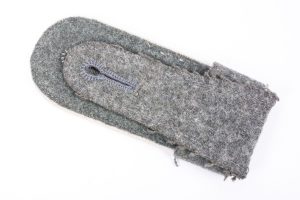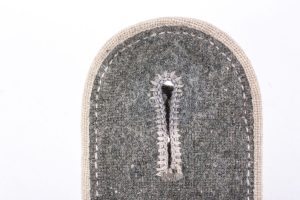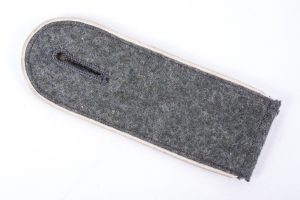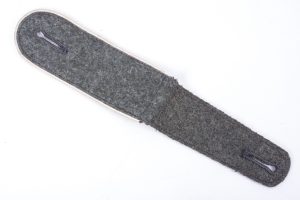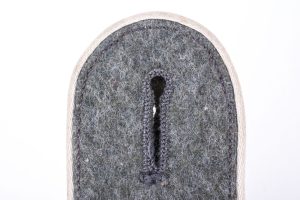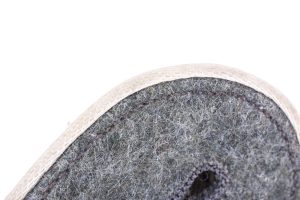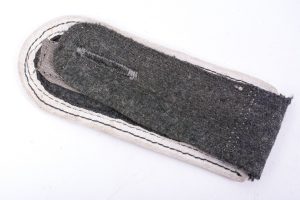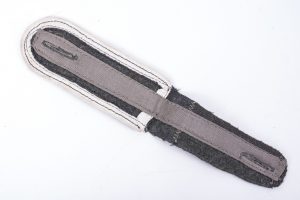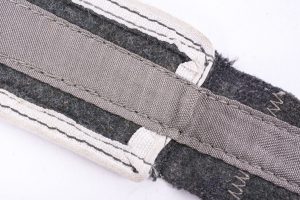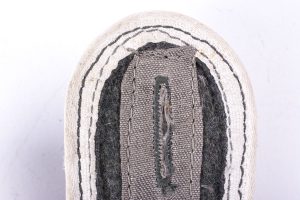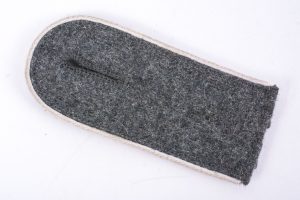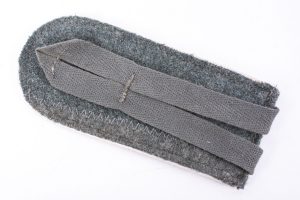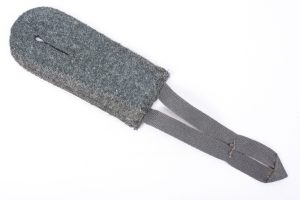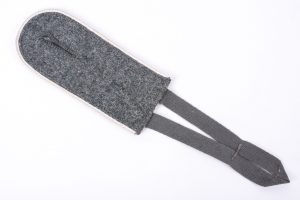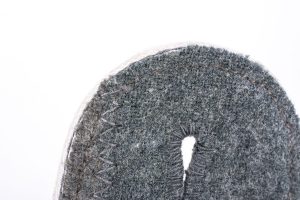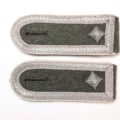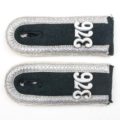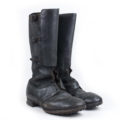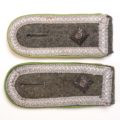Heer EM / NCO shoulderstraps between 1933 and 1945
The shoulderstraps on the German army uniform were significant for the wearer. They indicated the rank, service branch and sometimes the unit. These straps are vast in variety and are a whole separate field of collection. The straps were intended to be easy to removed from the uniform for washing and switching units. These shoulderstraps evolved after world war one from brightly coloured wide cloth to the narrow and dull coloured straps we are used to seeing in world war two. Having bought a large shoulderstrap collection i thought it would be just the time to write a short article highlighting the individual differences and varieties, but mostly putting them on a timeline. I chose to keep my basic comparison all in the white Infanterie Waffenfarbe to keep things clear. I will do more Waffenfarbe comparisons later in the article.
The M33 Heer Infanterie shoulderstrap
The first new shoulderstrap to be introduced after the Reichswehr era straps in 1933 is the pointed M33 shoulderstrap executed in uniform cloth. These straps featured no coloured piping but were mostly cyphered with regiment number in the specific branch colour.
The M34 Heer Infanterie shoulderstrap
When the Heer switched to dark green collars in 1934 the dark green pointed M34 shoulderstraps were introduced. These straps featured no coloured piping but where mostly cyphered with regiment number in the specific branch colour.
The Heer ‘transitional’ Infanterie shoulderstrap
Following the pointed style shoulderstraps these straps were introduced as a transitional style between the pointed style and the round style, but still without piped border. These straps only saw a short manufacturing period and can be considered scarce.
The M36 Heer Infanterie shoulderstrap
In 1935 the first removable and piped shoulderstraps were introduced. These round style shoulderstraps on a dark green wool base featured a wool piping around the border. These borders were made in a wide variety of Waffenfarben, mostly in wool. These straps can also be seen with stitched unit cyphers. Although these straps were first produced in 1935, they only saw large production when the new M36 style uniform was introduced and hence we call this strap the M36 style.
The M40 Heer Infanterie shoulderstrap
In 1940 the Heer introduced the M40 uniform with a uniform cloth collar and thus they needed fitting uniform cloth shoulderstraps. These shoulderstraps are in the same cut as the M36 shoulderstraps. These straps can also be seen with stitched unit cyphers although this was not common. New with the introduction of the M40 shoulderstraps were removable cypher slip ons. These slipped on top of the shoulderstraps indicating the wearers unit but could also be removed if need be. Around 1941 the piping was switched from wool to rayon. Also around 1941 is the first time we see clothing scraps being used to manufacture the underlays of these shoulderstraps.
The M44 Heer Infanterie shoulderstrap
We call this one the M44 shoulderstrap as its a simplified type of the M40 shoulderstrap. This shoulderstrap abolished the underlay completely and comes with the typical rayon piping. These straps can be observed in many wool and thread colours coming with the typical rayon and basket weave piping. The buttonholes either straight or typical keyhole button. These straps are manufactured exactly as the other German uniform items of that year. These straps were manufactured in masse without the need for aesthetics. One can easily recognize these straps from the top by viewing the two reinforcement stitches running along the rayon strip in the middle that was placed to reinforce the shoulderstraps.
The M45 Heer Infanterie shoulderstrap
Arguably the most interesting and last design of Heer shoulderstraps is this pattern. The shoulderstraps are short and most probably made for the M44 pattern Feldbluse. These straps were made with the then standard rayon piping. The interesting part on these shoulderstraps is that these have omitted the wool tongues for a simplified tongue made out of tape. These strap might well be a variant of the M40 pattern shoulderstrap but the fact that these are mostly seen in Italian wool indicates these were not produced en masse prior to 1944.
Frederik Suijkerbuijk – fjm44 military antiques




